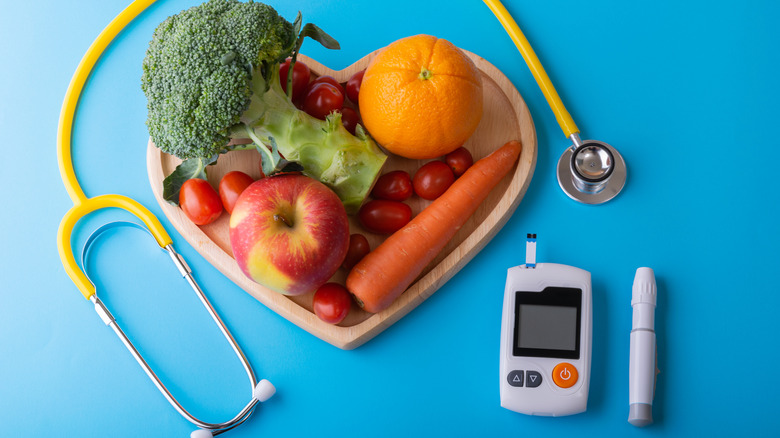Different Types Of Diabetes Explained
According to the American Diabetes Association (ADA) in 2018, over 10% of Americans had diabetes and over 1.5 million more people are newly diagnosed each year. The disease is responsible for over a quarter of a million deaths per year and with these statistics, chances are either you or someone you know has been directly affected by diabetes. While we hear about it regularly and generally refer to all types collectively as "diabetes," it's important to understand the differences between the three major types of diabetes: Type I, Type II, and Gestational diabetes.
Diabetes is a systemic disease in which the body cannot regulate insulin production for a multitude of reasons. Complications of Type I and Type II diabetes include but are not limited to: diabetic ketoacidosis, diabetic neuropathy, increased risk of cataracts and glaucoma, non-healing or slow-healing skin wounds, kidney disease, high blood pressure, heart attack, and stroke (via ADA). Complications of gestational diabetes, which occurs in pregnant women, include: excessive birth weight, preterm birth, still birth, and an increased maternal risk of developing Type II diabetes later in life (via Mayo Clinic). Diabetes is a public health concern and it's important we are all educated on what it is and what we can do to prevent and manage it.
The difference between Type I and Type II diabetes
Type I diabetes is considered an autoimmune illness and was once referred to as juvenile diabetes (via Centers for Disease Control and Prevention). However, after years of research, it is now known to develop at any age, although most cases are diagnosed in childhood or adolescence. Type 1 diabetes develops when the pancreas, the organ responsible for producing the hormone insulin, makes little to no insulin. Insulin is necessary to facilitate the entry of blood sugar into cells. Without insulin, sugar builds up in the bloodstream and can lead to organ damage.
In addition to a hemoglobin A1C test, Type I diabetes can be diagnosed and differentiated from Type II diabetes through blood work by looking for autoantibodies. In addition to dietary modifications, the hallmark of management of Type I diabetes involves taking insulin either through daily injections or through a wearable insulin pump. This differs from Type II diabetes.
Roughly 95% of Americans with diabetes have Type II diabetes (via CDC). Type II diabetes develops when your body's cells do not regulate and use insulin properly, also known as insulin resistance. Over time, your body's natural ability to produce and regulate insulin deteriorates. There is good news for Type II diabetes however; if applicable, through weight loss management and dietary modifications, Type II diabetes can be managed without medication. If these measures fail to reduce blood glucose levels, then oral or injectable medications may be necessary. Common symptoms of Type II diabetes include excessive thirst, excessive urination, and excessive hunger (via CDC).
A note on gestational diabetes
While the exact cause of gestational diabetes remains unclear, what is known is that during pregnancy, some of the hormones which support the placenta can sometimes block a mother's ability to regulate insulin normally (via Mayo Clinic). Another potential cause can be due to weight gain during pregnancy which can trigger insulin resistance. Gestational diabetes occurs in approximately 10% of pregnancies and if left untreated, the mother and baby may both be harmed, so it is critical for expectant mothers to be timely diagnosed (via ADA). Gestational diabetes can lead to maternal high blood pressure, preeclampsia, the need for a cesarean delivery, and the increased risk of diabetes in the future.
If you think you may have diabetes, early diagnosis is key and can be done so through a blood test. Talk to your healthcare provider, and in the meantime, avoid sugary foods and desserts, stay hydrated, and exercise regularly.



